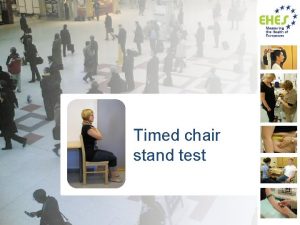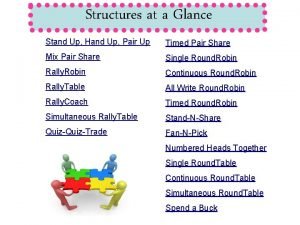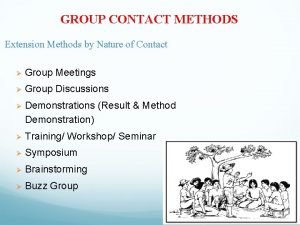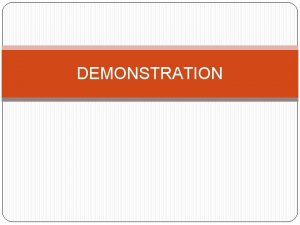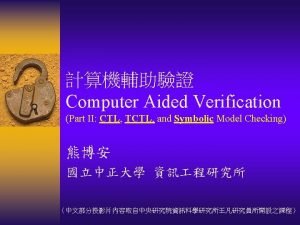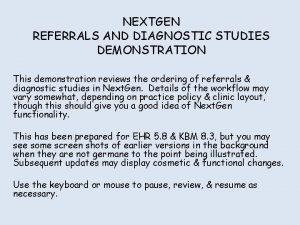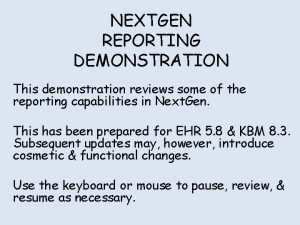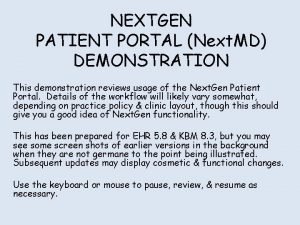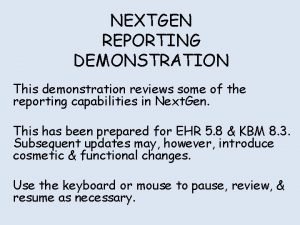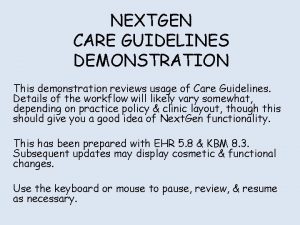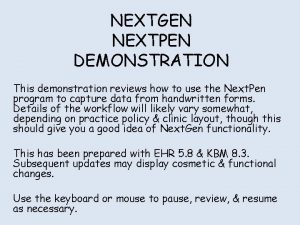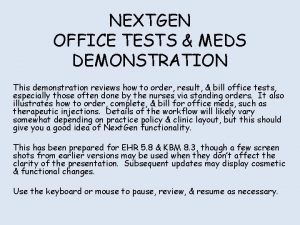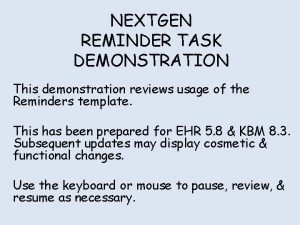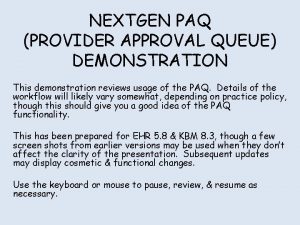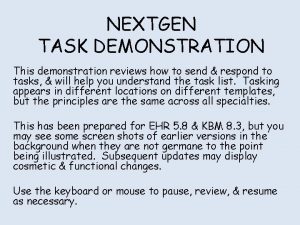Timed Up and Go Demonstration Timed Up and























- Slides: 23

Timed Up and Go Demonstration

Timed Up and Go Demonstration

Timed Up and Go Demonstration • Written instructions in Nursing and Therapy Tracks • www. homehealthquality. org • Demonstration performed by Mary Calys, PT, MS, BSW

Timed Up and Go • Screening tool that assists with identifying patients at risk for falls • Easily performed in the home • Performed by nurses and therapists

Preparation • Preparation: Ask the patient if he or she wears glasses or is experiencing visual problems. • Patient should wear eyeglasses and use assistive devices (cane, walker, etc. ) if applicable.

Steps 1. 2. 3. 4. Ask the patient to sit comfortably in the chair Ask patient to rise, by stating, “Ready, set, go” and begin timing If patient experiences dizziness upon rising, they may momentarily stand still to resolve Patient walks toward point of destination (10 foot walk)

Steps (cont. ) 5. 6. 7. After reaching point of destination, patient turns around and returns to chair When patient sits down, stop timing Patient is scored according to the time in seconds required to complete the entire task

Scoring • Less than 10 seconds – high mobility • 10 -19 seconds typical mobility • 20 -29 seconds slower mobility • 30+ seconds diminished mobility

Scoring (cont. ) • Clinical decisionmaking is an important factor with using the Timed Up and Go exercise

Scoring (cont. ) • Observe the patient for the following as a part of the decision regarding patient risk for falls: – Undue slowness – Hesitancy – Abnormal movement of trunk or upper extremities – Staggering or stumbling – Dizziness

Measuring Distance • Tips on measuring distance for Timed Up and Go screening

Demonstration 1. 2. 3. 4. Ask the patient to sit comfortably in the chair Ask patient to rise, by stating, “Ready, set, go” and begin timing If patient experiences dizziness upon rising, they may momentarily stand still to resolve Patient walks toward point of destination (10 foot walk)

Demonstration (cont. ) 5. 6. 7. After reaching point of destination, patient turns around and returns to chair When patient sits down, stop timing Patient is scored according to the time in seconds required to complete the entire task

Demonstration (cont. ) 1. 2. 3. 4. Ask the patient to sit comfortably in the chair Ask patient to rise, by stating, “Ready, set, go” and begin timing If patient experiences dizziness upon rising, they may momentarily stand still to resolve Patient walks toward point of destination (10 foot walk)

Demonstration (cont. ) 5. 6. 7. After reaching point of destination, patient turns around and returns to chair When patient sits down, stop timing Patient is scored according to the time in seconds required to complete the entire task

Demonstration (cont. )

Patient Demonstration Preparation: • • Explain screening and steps Assess for eyeglasses and/or assistive devices

Patient Demonstration (cont. ) 1. 2. 3. 4. Ask the patient to sit comfortably in the chair Ask patient to rise, by stating, “Ready, set, go” and begin timing If patient experiences dizziness upon rising, they may momentarily stand still to resolve Patient walks toward point of destination (10 foot walk)

Patient Demonstration (cont. ) 5. 6. 7. After reaching point of destination, patient turns around and returns to chair When patient sits down, stop timing Patient is scored according to the time in seconds required to complete the entire task

Patient Score • This patient’s time was 23 seconds, which scored her as “slower mobility” • Additional clinical observation • At risk for falls

Fall Prevention • Fall prevention involves more than just assessment • Select appropriate interventions such as: – Appropriate referrals including therapy and nursing (therapy only patients) – Medication management – Remove hazards in the home – Patient and caregiver education

Timed Up and Go • Written instructions are included: – Leadership, Nursing and Therapy Tracks of the Fall Prevention Best Practice Intervention Package – www. homehealthquality. org

Thank you Missouri Alliance for Home Care www. homecaremissouri. org/index. cfm Mary Calys, PT, MS, BSW This material was prepared by Quality Insights of Pennsylvania, the Medicare Quality Improvement Organization Support Center for Home Health, under contract with the Centers for Medicare & Medicaid Services (CMS), an agency of the U. S. Department of Health and Human Services. The contents presented do not necessarily reflect CMS policy. Publication Number: 8 SOW-PA-HHQ 07. 671. App. 10/07.
 7cs of communication completeness
7cs of communication completeness On delay timer symbol
On delay timer symbol Timed writing examples
Timed writing examples Timed stands test manual
Timed stands test manual Timed pair share
Timed pair share Timed writing rubric
Timed writing rubric Port mapper failure - timed out
Port mapper failure - timed out Pastimistic
Pastimistic Advantages of group contact method
Advantages of group contact method Sales presentation format
Sales presentation format Sales presentation and demonstration
Sales presentation and demonstration Example of demonstration effect in tourism
Example of demonstration effect in tourism The demonstration effect in tourism
The demonstration effect in tourism Potential energy demonstration
Potential energy demonstration Ornamental horticulture demonstrations ideas
Ornamental horticulture demonstrations ideas Method of demonstration
Method of demonstration On considère
On considère Joseph beuys auschwitz demonstration
Joseph beuys auschwitz demonstration Blanket referral in dentistry
Blanket referral in dentistry Tattletooth program
Tattletooth program Vicenta ybardolaza
Vicenta ybardolaza Ideas for demonstration speeches
Ideas for demonstration speeches Purpose of demonstration speech
Purpose of demonstration speech Théorème des restes chinois
Théorème des restes chinois



